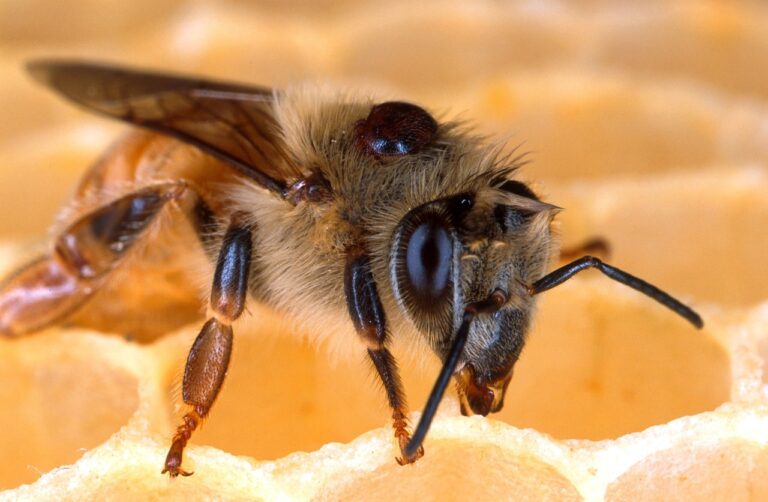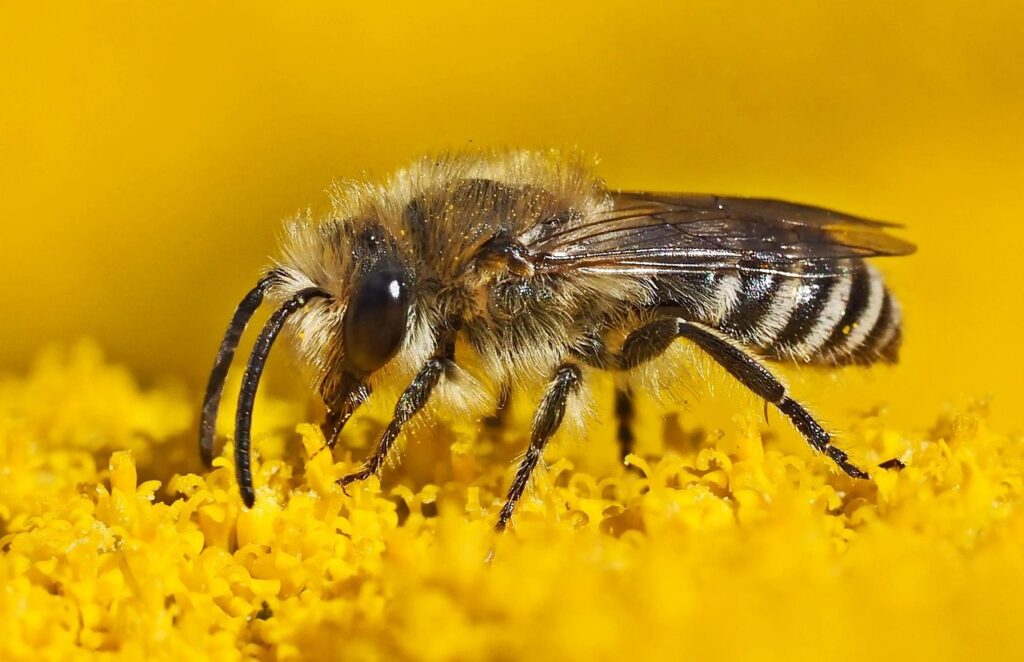The honey bee is a remarkable creature, not only for its role in pollination and honey production but also for the unique ways in which it handles threats to its existence.
Among these threats, the Varroa destructor mite stands out as one of the most significant challenges faced by beekeepers and honey bee populations worldwide.
This parasite attaches itself to honey bees, feeding on their bodily fluids and thus weakening the bees, spreading viruses, and putting entire colonies at risk.
While the Varroa mite poses a dire threat, nature has equipped honey bees with several strategies that, when understood and leveraged by beekeepers, can help mitigate its impact effectively.
The Varroa Mite Challenge
Varroa mites first appeared in the United States in the late 1980s and have since become a notorious enemy of honey bees. These mites reproduce on adult bees and within brood cells, which leads to both direct harm and the transmission of various diseases such as Deformed Wing Virus and Acute Bee Paralysis Virus.
The consequences of Varroa infestation can be catastrophic, resulting in weakened bee colonies, lowered honey production, and in many cases, entire hive loss. The stakes are high, prompting beekeepers to explore innovative solutions that harness the honey bee’s natural defenses.
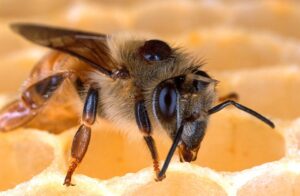
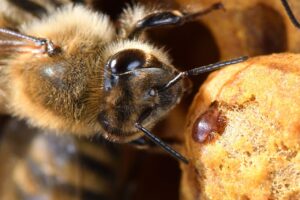
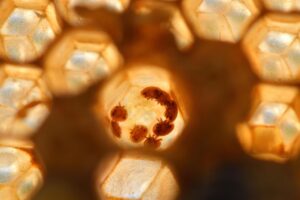
Natural Defenses
Grooming and Colony Behavior One of the fundamental ways honey bees defend themselves against Varroa mites is grooming behavior.
Honey bees have evolved to groom themselves and each other to remove parasites. This behavior becomes particularly prevalent in bees that are part of colonies with high mite loads.
By enhancing grooming behavior, beekeepers can help promote a natural defense mechanism within the hive.
Selecting for bee strains that exhibit higher grooming tendencies or encouraging practices that allow bees to spend more time grooming can lead to healthier colonies.

Breeding for Resistance Breeding programs that focus on developing Varroa-resistant honey bee strains have been gaining momentum.
By selecting bees that show resilience to Varroa mites, beekeepers can create populations better equipped to deal with infestations.
The Russian honey bee and the VSH (Varroa Sensitive Hygiene) bees are examples of bee strains that have demonstrated a natural ability to manage Varroa populations more effectively.
Incorporating these bees into a breeding program can substantially improve the overall health of bee colonies while reducing dependence on chemical treatments.
Integrated Pest Management
While honey bees have natural defenses, Integrated Pest Management (IPM) strategies can enhance colony resilience. IPM involves using a combination of biological, physical, and chemical methods to keep pest populations under control.
Monitoring mite levels, using screened bottom boards to allow mites to fall from bees, and utilizing drone brood removal can all contribute to reducing Varroa populations in a hive.
By combining these practices with natural behavioral adaptations, beekeepers can establish a more holistic approach to hive management.
Utilizing Essential Oils and Natural Extracts
For beekeepers looking to minimize chemical treatments, essential oils and natural extracts provide alternative solutions to manage Varroa infestations. Products such as thymol, which is derived from thyme, have been shown to be effective at reducing mite populations without harming bees when used correctly.
Beekeepers can apply these natural remedies as part of their regular maintenance practices, offering a path to healthier hives while adhering to environmentally friendly practices.
Here’s a beekeeper giving an Oxalic Acid vaporization treatment. Treatments like Apiguard and Oxalic Acid are natural substances, non-chemical but still considered less natural by some.
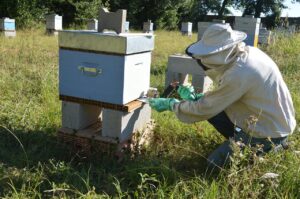
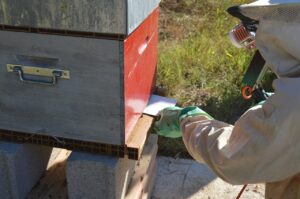
Promoting a Healthy Environment
A well-maintained environment is essential for the overall health of honey bee colonies. Strong colonies are better able to cope with Varroa infestations. Beekeepers should focus on nutrition and minimizing stressors within the hives.
By providing colonies with diverse pollen sources and ensuring they have ample access to clean water, beekeepers can strengthen their bees’ immune systems. Additionally, maintaining strong queen genetics and promoting brood rearing can boost colony vitality, helping bees withstand Varroa attacks.
The Role of Technology Advancements in technology have also opened up new possibilities in the fight against Varroa mites. There are now digital monitoring tools that allow beekeepers to assess mite levels and hive conditions with precision.
Hive scales, thermometer and humidity sensors, along with apps that aggregate these data points, enable beekeepers to make informed decisions about hive management. These innovations can assist in scheduling treatments or interventions at the optimal time, thus maximizing their effectiveness.
Community Engagement and Knowledge
Sharing Lastly, a collective approach among beekeepers can prove invaluable in managing Varroa mites. Sharing insights, experiences, and successful strategies within local beekeeping communities fosters a culture of learning and resilience.
Workshops, seminars, and forums can help educate beekeepers about the importance of recognizing Varroa infestation early and the various methods available for management. Collaboration during these educational exchanges can lead to better outcomes for all colonies involved.
Conclusion
While the Varroa mite represents a significant threat to honey bee populations, the honey bee has developed remarkable mechanisms to combat this peril.
By fostering natural behaviors, breeding for resistance, utilizing integrated pest management strategies, and embracing technological advancements, beekeepers can implement comprehensive solutions to minimize the impact of Varroa mites.
Additionally, fostering community engagement will broaden the shared knowledge and tools necessary for adaptation. Ultimately, the combination of nature’s ingenuity and human innovation will pave the way toward a sustainable future for honey bees and the vital ecological role they play in our world.
What can we as beekeepers do about Varroa Destructor Mites?
One way to manage the Varroa Mite issue is to follow the methods in the Varroa Mite Management Handbook for Beekeepers: The Honey Bee Solution to Varroa by Steve Riley.
Steve’s approach is well documented with some of his Westerham Beekeepers club members are achieving more than 7 years of treatment free hives that are showing Varroa resistant traits in their bees.
**Published by Northern Bee Books** **Release Date: March 14, 2024**
Introduction
The Varroa mite, *Varroa destructor*, poses one of the most significant threats to honey bee health globally.
As beekeepers, understanding how to manage these pests is crucial to maintaining healthy colonies and ensuring the sustainability of our beekeeping practices.
This handbook serves as a comprehensive guide, offering practical solutions and insights into effective management strategies to mitigate the impacts of Varroa mites.
Understanding the Varroa Mite The Varroa mite is an external parasite that feeds on the bodily fluids of honey bees and can vector various viral diseases.
They reproduce within beehives, causing significant population decline if left unchecked. Early detection and appropriate management practices are essential for keeping your colonies thriving.
Biology and Life Cycle
Understanding the biology and life cycle of the Varroa mite is essential for effective management:
1. **Egg Stage**: Female mites enter brood cells just before they are capped, laying eggs that hatch into larvae.
2. **Nymph Stage**: The developing mites feed on the larval bee, maturing into adult mites.
3. **Adult Stage**: Adult mites emerge and spread to other bees and brood cells, perpetuating the cycle.
Monitoring Varroa Populations
Successful management begins with accurate monitoring. Methods to assess mite populations include:
- **Sticky Traps**: Position sticky boards in your hives to capture falling mites.
- **Drone Brood Removal**: Examine drone comb to check for mites, as they prefer drone brood.
- **Alcohol Wash Method**: Collect bees and perform an alcohol wash to determine mite levels quantitatively.
Management Strategies
Effective varroa management encompasses several strategies, which can be broadly classified into cultural, chemical, and biological approaches.
1. Cultural Management Practices
**Regular Inspections**: Keep a close eye on your colonies during the active season. Regular checks allow you to detect issues early.
**Brood Management**: Minimizing brood production during peak mite seasons can reduce the number of new mites. Consider timed breaks in brood production, especially during late summer.
**Bee Breeding**: Foster bees that exhibit hygienic behavior. These bees are naturally better at removing mites from the hive.
2. Chemical Management Practices
The use of chemical treatments should be approached with caution to avoid resistance development.
**Synthetic Miticides**: Products such as Apivar (Amitraz) and Varroa Quick Treatment (Formic acid) are common choices. Follow application instructions carefully.
**Organic Acids**: Formic acid and oxalic acid treatments are alternative solutions favored by many organic beekeepers. Essential to follow safety guidelines.
3. Biological Control Methods
**Drone Brood Trapping**: Remove drone comb since mites prefer drone larvae, reducing the overall mite load in the colony.
**Nosema Treatment**: Maintaining overall bee health can help strengthen the hive against mite infestations. Address any potential Nosema infections.
Seasonal Management – Varroa management is an ongoing process that varies seasonally:
**Spring**: Begin inspections as the season warms up, monitor for overwintered mite levels and treat if necessary.
**Summer**: Watch for mite levels during peak foraging times and manage brood to balance bee strength and mite load.
**Fall**: Prepare for winter by treating colonies; ensure that strong populations are ready to survive the cold months.
**Winter**: Monitor for hive weight and maintain healthy clusters to prevent losses from starvation and disease.
Record Keeping Keeping comprehensive records allows beekeepers to track mite levels, treatments applied, and overall hive health over the years. Use spreadsheets or apps designed for beekeeping to streamline this process.
Conclusion – The fight against Varroa mites is a critical aspect of modern beekeeping. By utilizing a combination of monitoring techniques and management strategies, beekeepers can significantly reduce the impact of these harmful pests.
Remember, the goal isn’t just to control Varroa mites but to maintain healthy, productive colonies for years to come.
Steve Riley’s handbook will be an invaluable resource as you work to protect your bees from Varroa mites and foster a healthy beekeeping environment.
Images by Pexels / Pixabay
Feel free to copy this handy Hive Inspection Record Sheet shared by Steve Riley and the Westerham Beekeepers
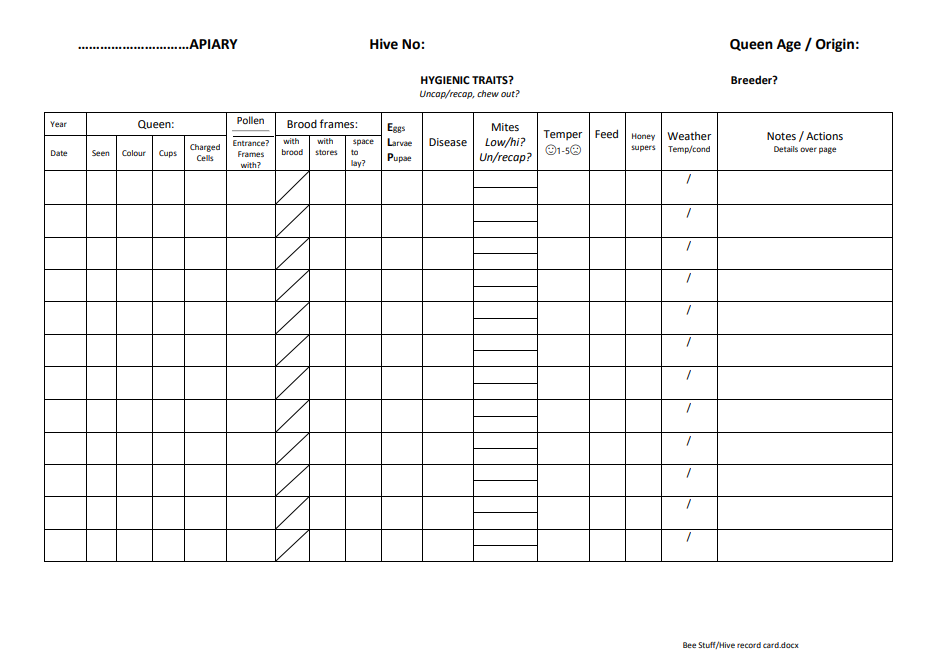
Ad – Amazon Associate Store

